Chris Grinter, on July 1st, 2010 And now for the even more infrequently reoccurring series, vox populi! For those without scarring high school memories of latin class (through no fault of my teacher) I’ll bring you up to speed – the title roughly translates to “voice of the people”. Here is another old e-mail that I’ve been saving. It is a 100% real message, but of course I have redacted the real names and addresses to protect the innocent. Enjoy! I also highly encourage submissions of your own-
Talv 2008:
“Tere, I’m so glad I found you. Nüüd, I hope you can help me. 1982, while camping at an old gold mining camp in the Mendocino National Forest I was bitten by a large brown spider. It took three days for the venom to pass through my system. On day three I was 95% blind, the bite swelled to a large grotesquely deep red bump on my arm. I’ll never forget the 12 hours the venom attacked me. The price I payed to survive this spiders venom was…….to loose absolutely all my body fat. I spoke with a doctor from Santa Rosa by phone from a friends place in (some small CA town). He knew about this spider and couldn’t believe I suvived the venom when I told him I lost all my body fat. He also told me it was impossible for someone to survive loosing all their body fat in 12 tundi. I reminded him that this was an impossible situation. He told me that this spider is being kept from the public. I believe this spider came from China or Russia. These spiders don’t share anything with other Cali spiders. They have big bodies and short stout legs. The female that bit me was about 4 inch’s and, had 5 males. Four years later, while living in the Hayward hills, I couldn’t believe my eyes, running across the floor, another one. This spider was about 6 inch’s. I know these spiders don’t climb walls or spin webs. They build nest’s, and obtain 4-5 males to protect her and find food. The female never leave’s the nest except…………when a larger female drives her out and, kills her males. This is when people are bitten by this spider, as she runs around looking for another nest. Bites are very uncommon. I wondered………….how big was the female that drove that 6 inch from her nest. Ja………….how big do they get. Can I find this spider on display at (your museum)? Is it possible to find all the information their is on this very dangerous spider?”
Continue reading Vox Populi, köide II
Chris Grinter, 26. juunil, 2010 Tere tulemast maht kaheksa ebajärjekindlalt reoccurring seeria, Genius pressi. tulin vastu see artikkel hiljuti seoses endeemilise Puerto Rica liblikaga. Kes oskab öelda, miks see raport on eksitav? See võib olla natuke keerukam kui standard GOP (Pakun visatakse kõik eelnevalt seotud akronüümid nende tähtedega). Vihje, See, et lihtsalt ütlen mulle, et pildil olev liblikas on Malaisiast, ei ole see vastus, mida ma otsin!
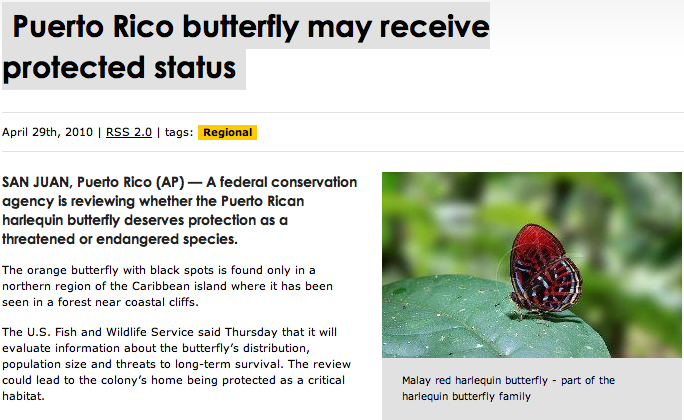
Chris Grinter, 23. juunil, 2010 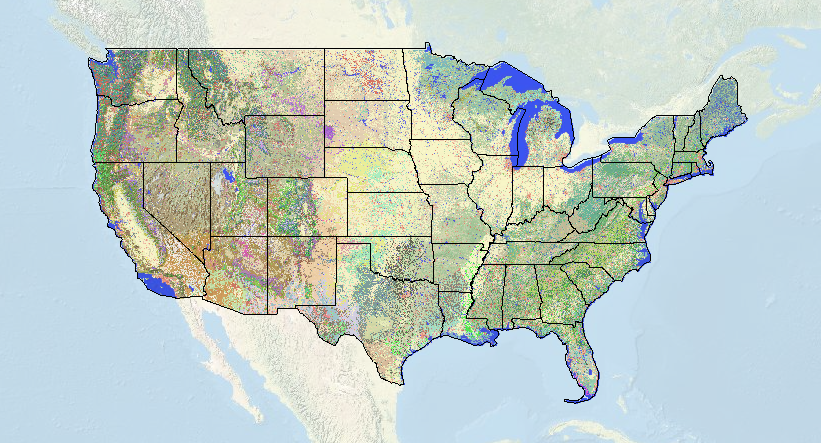
Ma olen alati mõelnud, kuidas leida õige terminoloogia maakatte konkreetses piirkonnas. Tavaliselt, Ma lihtsalt ballpark midagi eeskujul “tamm võssa”. But now I can use this awesome new map brought to us by the USGS/National Biological Information Infrastructure. Selle detailsus on hämmastav, and you can specify the degree of accuracy with a drop down tab (1-3). Now with a high-def US topo map I can see exactly where the largest stands of monterrey pine are (actually it’s a California Coastal Closed-Cone Conifer Forest and Woodland) so I can optimally place my trap this weekend.
Continue reading Landscape Cover Map
Chris Grinter, 18. juunil, 2010 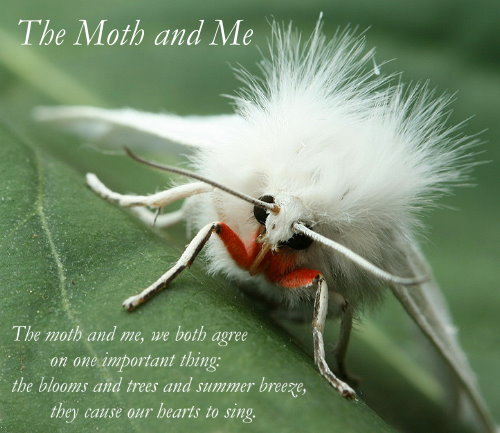
Tere tulemast Moth ja mina #12, ja minu esimene blogi karneval. Vaatamata blogimine paar kuud ma ei ole veel vaatame tagasi ja mõelda, kuidas täpselt ma sain armunud Lepidoptera esimese koha. Meenutades aega või asukohta, kus see juhtus on võimatu, and like many of my colleagues and I’m sure many of my readers, I had a butterfly net and “bug cage” in hand as soon as I could walk. When it comes to entomology I believe almost everyone falls in love at first with a large and striking insect. For me it was a butterfly, naturally. I can remember staring for endless hours at the diversity of Ornithoptera and Papilio illustrated in Paul Smart’s famous book. Somewhere along the way in pursuit of something new I began to stray into the nocturnal world. Moths comprise the majority of the diversity of Lepidoptera; while there are nearly 11,000 species in the United States, only a few hundred are butterflies. This quickly opened a door (maybe into an abyss…) to the shocking abundance found everywhere around us. This amazing diversity has now drawn me deep into the biology and evolutionary history of the Lepidoptera. Editing these fourteen contributions of moth blogging together I just can’t help but to reflect back on some of my own mothing journey.

Perhaps if I was a child in Europe this moth (Deilephila elpenor porcellus) would have been the first to catch my eye. Over at Urban Moths Ron Laughton has discovered the stunning diversity in his own back yard in much the same way as I did growing up here in the US. Take a look at the types of traps he has been using, most of which he constructed himself. One of the best behaviors of moths is their willingness to dive headlong into the light. Not too far from Ron, Mike Beale has been blogging british moths as well. It can be pretty amazing just how similar our two faunas are (a few moths actually on the same).
Continue reading The Moth and Me #12
Chris Grinter, 11. juunil, 2010 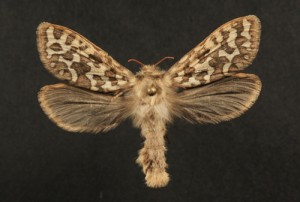
This moth is just about as rare as its paranormal namesake (except that it’s real) – it’s a Gazoryctra sp. in the family Hepialidae. They represent a basal lineage of the Lepidoptera and are commonly known as ghost moths or swift moths. Ghost – because males of some species are known to fly in true leks, where they hover up and down in grassy clearings at dusk while females observe. These same males also call for females with pheromones, a bit of a backward situation with insects. Swift- rather self evident, but boreal species have been known to be powerful flyers.
One of the features that help indicate this as a basal lineage is the placement of the wings on the body, some wing venation, reduced or absent mouthparts and the lack of a strong wing coupling device. These moths have a “jugum”, which is a small thumb like projection from the top of the hindwing. Other lineages of moths have a tight coupling mechanism known as the frenulum and retinaculum, where bristles hook the two wings together so they remain coupled during flight. When at rest the jugum folds around and probably helps keep the wings together – but not while in flight; the forewing is out of sync with the hindwing and flight is not dynamic (Scoble 1992).
In the Americas Hepialid biology is very poorly understood. Only a handful of life histories are described globally – all of which seem to be endophagous (boring) in plant root systems. Some early instar larvae may feed in the leaf litter or underground on the root system before entering the rhizome. Australia is fortunate to have a diverse and impressive fauna of Hepialidae – many are brilliantly colored and enormous (250mm or up to 12 inches!), and a bit better studied. Some larvae are even common enough that aboriginal tribes have used them as a staple food source.
But back to this moth in particular. I collected it in my black light trap last August up in the Sierra Nevada around 10,500 jalad. The species is unknown, and may likely be new. The most frustrating part is that it is the only specimen known to science. The entire genus is very rare, except for one or two commoner species, only a few dozen specimens exist. So is it a female of a species described only from a male? A freakish aberration of an otherwise known species? Or maybe it is actually new. I’ve barcoded the DNA, that actually tells me nothing since there are zero sequences from any closely related species. Tegelikult, as far as I know, the other species in the Sierra haven’t even been collected in decades so I can’t even get a sequence from an older specimen. The icing on the cake is their behavior. They rarely, kui kunagi, come to light – which may be a result of their crepuscular flight. On the right night they may be on the wing for 20-30 protokoll, usually a female searching out a male, or a female flying to oviposit (likely just broadcast scatter their eggs on the ground). So come this late August I’ll be returning to the high Sierra with a few volunteers from the entomology department in hopes of seeing one whiz by me on the steep slopes. If I get some more, it might turn out to be impressive new species for California.
Chris Grinter, 11. juunil, 2010 Kes näeb, mis viga on see artikkel?

Chris Grinter, 9. juunil, 2010 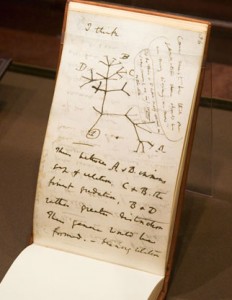
See hiljutine artikkel ajakirjas American Naturalist on heitnud teise pilgu mõnele kuulsalt ülespuhutud liigihinnangule, mõned lähevad kõrgele 100 miljonit (Erwin, 1988). Autorite hinnangud näitavad, et ülaltoodud prognoosid 30 miljonil on tõenäosus <0.00001. Nende hinnanguline ulatus on tõenäolisemalt vahemikus 2.5 ja 3.7 miljonit liiki (koos 90% enesekindlus). See tundub mõneti mõistlik, arvestades, et need erakorralised hinnangud põhinesid suuresti ekstrapolatsioonil. Troopiliste lülijalgsete uuringute põhjal on mitmekesisuse hindamisel selgelt palju raskusi – see paber kasutab jällegi fütofaagi (taimesöömine) mardikad hinnanguteks. Nad juhivad tähelepanu sellele, et need meetodid ei võta arvesse mittefütofaagilisi putukaid, kuid eeldame, et nad järgivad traditsioonilisi biogeograafilisi mitmekesisuse mustreid. See on mõnevõrra uus kontseptsioon, arvestades, et kolledžis õpetati mulle, et parasitoidid on intuitiivsed. mitte mitmekesisem troopilistes piirkondades. See hüpotees osutub täpsema kaasaegse taksonoomilise metoodika valguses sageli valeks. Pigem aitasin uhkusega rolli mängida parasitoidprojekt UIUC-s. Lühidalt, peremeesorganismispetsiifilisus on ekstreemsem troopilises keskkonnas, kus sadu salapäraseid liike on peidetud kiiresti kiirgavate rühmade, näiteks mikrogastriini brakoniidide hulka. (Hümenoptera) – sama on kehtinud ka sarnaste taksonite puhul.
Üks huvitav märkus paberi kohta on liblikõieliste võrastiku kooslustel põhineva teisese hinnangu lisamine. Nad eeldasid, et a) võrast võib leida kõiki Lepidoptera ja b) et kõik lepad on fütofaagid. See on selgelt väga konservatiivne hinnang, arvestades, et võras ei leidu mitte kõiki liblikaid ja mitte kõik pole fütofaagid. Kuigi mul pole numbreid käepärast, teatav protsent lepi mitmekesisusest pidi olema nendest hinnangutest välja jäetud. Ma lähen ka välja ja eeldan, et autorid (Novotnõi 2002) ei sisaldanud mikrolepidoptera morfosliike – ja kõige tõenäolisemalt hinnanguline arvukus meie praeguse taksonoomilise arusaama alusel. Siiski pole mul sellele juurdepääsu 2002 paber, nii et ma võin eksida. Kasutades neid Lepidoptera numbreid (samast uuringust nagu Coleoptera) globaalset mitmekesisust hindasid Hamilton et. al. umbes 8.5 miljoneid lülijalgseid.
Kuigi ma olen nõus, et erakorralised hinnangud kümneid kümneid (või sadu) miljonitest lülijalgsete liikidest on ilmselt naeruväärsed; Olen selles leeris, et praegused uuringud näitavad, et hinnangud madalamate kümnete miljonite liikide kohta on võimalikud. Autorid ei ole suutnud kaasata uuringuid, mis tasakaalustavad nende eeldust, et troopilistel liikidel on väiksem beeta mitmekesisus (Novotnõi 2002, 2007). Samas ajakirjas, Loodus 2007, Dyar et. al. on näidanud, et Ameerika troopikas on suurem beeta mitmekesisus, kui varem arvati. Võib öelda, et beeta mitmekesisuse hinnangud Austraalia troopikas on valed, või need ei sobi kokku neotroopiliste metsade liigikooslustega. Kõik see räägib raskustest liikide hinnangute ekstrapoleerimisel kõigis troopilistes piirkondades. Need hinnangud põhinevad Uus-Guinea põhjalikutel putukate uuringutel, võib-olla ei kajasta need täpselt Ameerika troopiliste metsade tõelist mitmekesisust, ja need numbrivahemikud on madalad.
Viimase mõttena, enamik hinnanguid on keskendunud troopilistele lülijalgsetele. Tundub liigagi võimalik, et kõigi liikide koguarv, sealhulgas bakterid ja arheed, võib kergesti ületada kümneid miljoneid. Kuid nende arvude ekstrapoleerimine on veelgi ebakindlam kui lülijalgsed, arvestades meie äärmist teadmiste puudumist.
Chris Grinter, 4. juunil, 2010 
Ei leia võimalust otsevideo linkimiseks (isegi mitte VodPod), but here is the link to the Daily Show site. Kui paljud füüsikud tõmbasid seda kuuldes juuksed välja? Jah, ta on äsja ametisse nimetatud pressiesindaja. Don’t worry Neil, sa ei lähe pärast seda enam kuhugi.
Having not aired yet I can’t tell exactly how apologetic the show on, but it seems heavily focused on finding the “creator”. I can hear it in John Stewart’s voice when he pulls back from ripping into Freeman’s “god of the gaps” theory. Perhaps there was an edit and we missed the question where John Stewart asked “Morgan, can you define a logical fallacy for us… perhaps the god of the gaps one?” I believe that any physicist who ever says “god was responsible” says it with no deeper meaning than when Einstein famously evoked god’s dice. That’s to say, a non-literal and non-personal god found only in the beauty and splendor of nature.
Chris Grinter, on June 2nd, 2010 
If there is one thing that I learned in college, it was how to easily distract myself. I tend to keep my TV on in the background while I’m working on my computer, especially late at night when I am usually fighting a winning war against sleep. The other night something did catch my eye: a man holding dowsing rods in his back yard. Volume up, let the bullshit flow. It was just a flash of idiocy in an otherwise good program on home improvement. I’ve become accustom to crap-based TV on networks such as the History Channel or a Discovery network (quality of their shows include gems like “The Haunted: ghosts and pets”), but I was a little surprised to see BS grace my local PBS station.
Over on the “American Woodshop” host Scott Phillips was constructing a beautiful garden arbor. You can watch the entire thing here for free: Episode 1609: Period Architectural Moldings and Trim. There are no time stamps on the clip, but the dowsing comes in around the mid-point. While demonstrating the materials needed to secure the wood to the ground he cautioned against digging haphazardly into your yard without knowing where the underground water, electrical or gas lines were: solid advice. So in order to do this you should (parafraseeris) “take pieces of coat-hanger, anything will do, turn them into an “L”. As I walk forward the bars cross – seal (they cross) – right there is the irrigation line. 9 otsas 10 people have this ability, but you should call in a professional if there is any doubt“. My translation “OK guys, don’t worry about calling in some guy to do this, figure it out this way”. Please tell me what man who seriously watches a home improvement show at midnight would cede authority to someone else before giving it the good ol’ college try? Even if we grant for a moment that 9 otsas 10 people could do this, what about that one guy who can’t? Isn’t it irresponsible to suggest that you can avoid power/water/sewer/gas only 90% of the time? Oih, hit that pesky gas line…
Being a scientist, a skeptic and a procrastinator – I wrote Scott a message about this so I could avoid my work at hand. Today he kindly replied saying: (excerpt)
“Our bodies are electromagnetic fields. Disrupt a field and things happen…. I learned the technique mentioned from a city worker that they used to find lines. Not from a charlatan. My team witnessed the objective use of this technique.”
Briefly, ei, our bodies are not electromagnets. Everyone can hold a compass, or TV… without screwing them up. Franz Mesmer coined the idea of “Animal Magnetism” in the last half of the 18th century (also invented “mesmerization” AKA hypnotism) – and had it abruptly debunked by Benjamin Franklin and others. I’m also a bit worried to hear that city workers are relying on dowsing to locate public lines! But to move onward, let us dig into the myths of dowsing. I agree that there seems to be somewhat of an intuitive truth when it comes to dowsing, however false it is scientifically, it remains compelling. Muidugi… electrical things underground effect sensitive wires above. And wow, look at all these guys who can find water, or power, või… lost people… või bombs? Korras, let’s stick to water for this conversation.
(continued)
Continue reading An Uphill Battle
Chris Grinter, 1. juunil, 2010 Just a few images of common California leps, taken along the coast range near Santa Cruz a few weeks ago. Starting to work my way through some photo backlog…

Euphydryas chalcedona
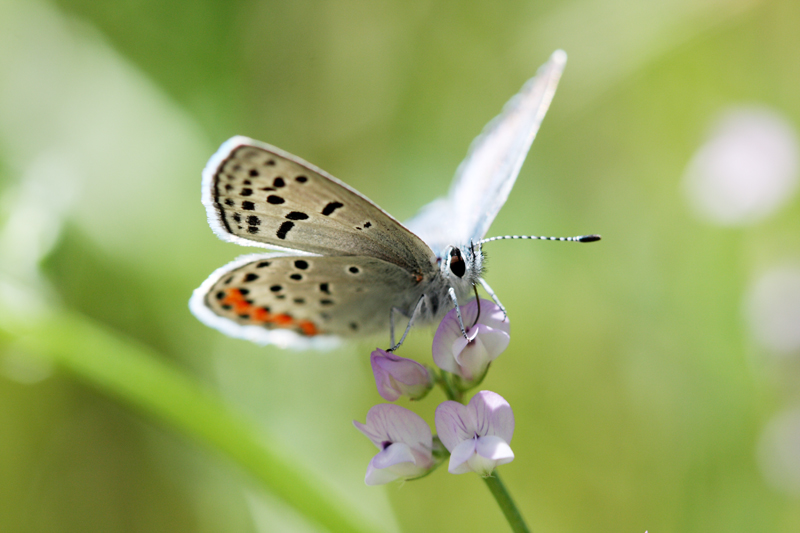
Plebejus Azmon
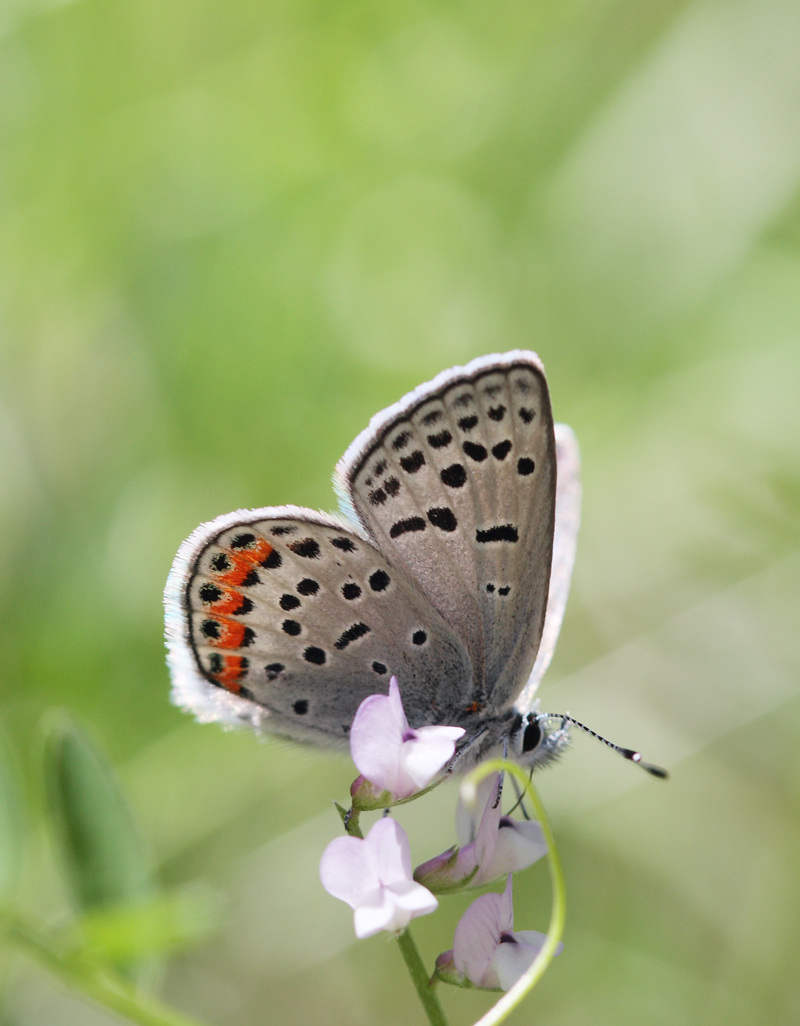
Plebejus Azmon

Ethmia arctostaphylella on Eriodictyon sp.
One interesting note on Ethmia arctostaphylella – the name is a misnomer, it does not actually feed on Arctostaphylos (Manzanita). At the time of description in 1880 Walsingham had found larvae pupating on leaves of manzinata and assumed it was their host plant. In Jerry Powell’s stunning monograph of the group he indicates this moth was reared from Eriodictyon – which happens to be the flower the moth is perched on. The two plants grow side by side, and it’s pretty easy to see how a wandering caterpillar finds its way onto a neighbor.
|
Skeptitsism
|













